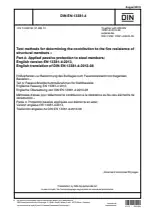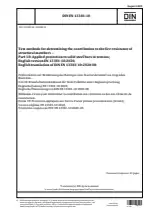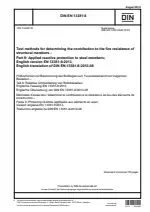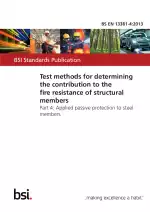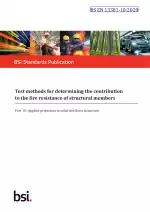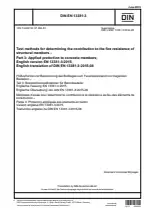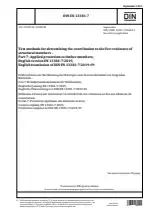Test Methods for Determining the Contribution to the Fire Resistance of Structural Members - Part 4: Applied Passive Protection to Steel Members
Also Known As:
The DIN EN 13381-4 standard provides a test method for evaluating the effectiveness of applied passive fire protection systems on structural steel members. The standard specifically focuses on beams and columns without openings in their web sections. It does not cover tension members unless further evaluation is conducted.
The standard applies to various steel sections, including I-sections, H-sections, angles, channels, and T-sections, as long as they have the same section factor as the analyzed I- or H-sections. It does not apply to solid bar or rod. The evaluation considers a range of factors, including thickness of the applied fire protection material, steel section characteristics (section factor), design temperatures, and fire protection classification periods.
The standard outlines the fire test procedures that need to be conducted to assess the coherence and attachment of the fire protection system to the steelwork. It also provides data on the thermal characteristics of the fire protection system when subjected to the standard temperature/time curve specified in EN 1363-1. The test methodology ensures that the collected data can be directly used in calculating the fire resistance of steel structural members according to the procedures outlined in EN 1993-1-2 and EN 1994-1-2.
| Descriptors | Building component test, Components, Construction, Definitions, Fire protection, Fire protection equipment, Fire resistance, Fire tests, Fire-resistant materials, Fire-resistant time, Loadbearing planes (horizontal or inclined), Performance tests, Specification (approval), Structural fire protection, Structural members, Structural steel members, Surface spread of flame, Qualification tests |
| ICS Codes | 13.220.50 - Fire-resistance of building materials and elements 91.080.13 - Steel structures |
| Language(s) | English |
| File Size | 1.7 MB |

